The Best Foods from Panama – Traditional Dishes you have to try!
As a food enthusiast, I have always been fascinated by the diverse cuisines of various cultures worldwide. One such cuisine that has always caught my attention is the traditional food from Panama.
Having traveled to this beautiful country and tasted some of its authentic dishes, I can attest that Panamanian cuisine is fantastic.

From its fresh seafood to its rich cultural heritage, Panama offers a unique blend of flavors and ingredients that make its cuisine truly distinct.
In this article, we will explore these delicious Panamanian dishes. For more food from around the world, check out the best food from Guyana, delicious dishes from Honduras, or the traditional delicacies from Barbados.

Ceviche
This popular Panamanian food is a seafood soup with fish, fresh lime juice, cilantro, and onions.
Unlike other Latin American countries, Panama’s ceviche is served with tomato sauce on top, adding an extra layer of flavor. The freshness of the ingredients and the tangy taste of the lime juice makes it a perfect appetizer.
It’s also commonly served as street food; you can find it at many local markets or restaurants throughout the country. Don’t leave Panama without trying this delicious and refreshing dish!
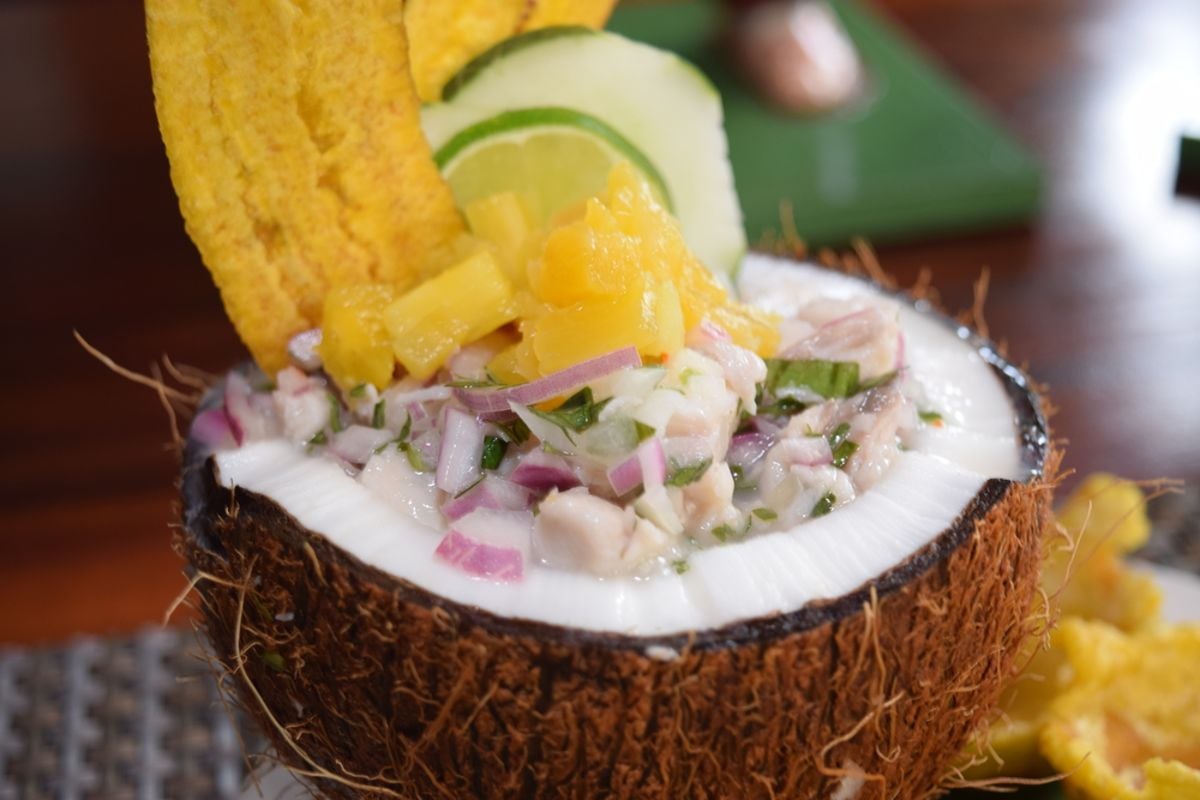
Guacho de Rabito
This traditional Panamanian dish is made with tender oxtail slow-cooked with vegetables and spices until it falls off the bone.
As someone who loves food from Panama, I highly recommend trying this delicious meal in Panama City. The shredded beef is cooked to perfection and served with corn flour mixed with water to make a thick gravy-like consistency.
It’s often served alongside white rice for a filling meal that will leave you satisfied. Don’t miss out on the chance to try this fantastic dish – your taste buds will thank you!

Volteado de Piña (Pineapple Upside Down Cake)
When enjoying my stay in Panama City, I made sure to try the Volteado De Piña – a traditional dish that’s a must-have for any foodie visiting this country.
This sweet pastry is made with pineapple and vanilla extract, baked into an upside-down cake that’s both moist and flavorful.
The combination of caramelized pineapple and fluffy cake creates a perfect balance of sweetness and texture.
Be sure to try the Volteado De Piña on your next trip to Panama. For more desserts from around the world, check out my guide about the best desserts from Bolivia or the tasty dessert from Ecuador.

Cabanga
This delicious dessert bursts with flavor in your mouth, making it the perfect side dish for traditional Panamanian foods like arroz con pollo or potato salad.
Cabanga is also often served alongside fried sweet plantains, adding a touch of sweetness to any meal. While not considered the national dish of Panama, it’s still an essential part of the country’s cuisine.
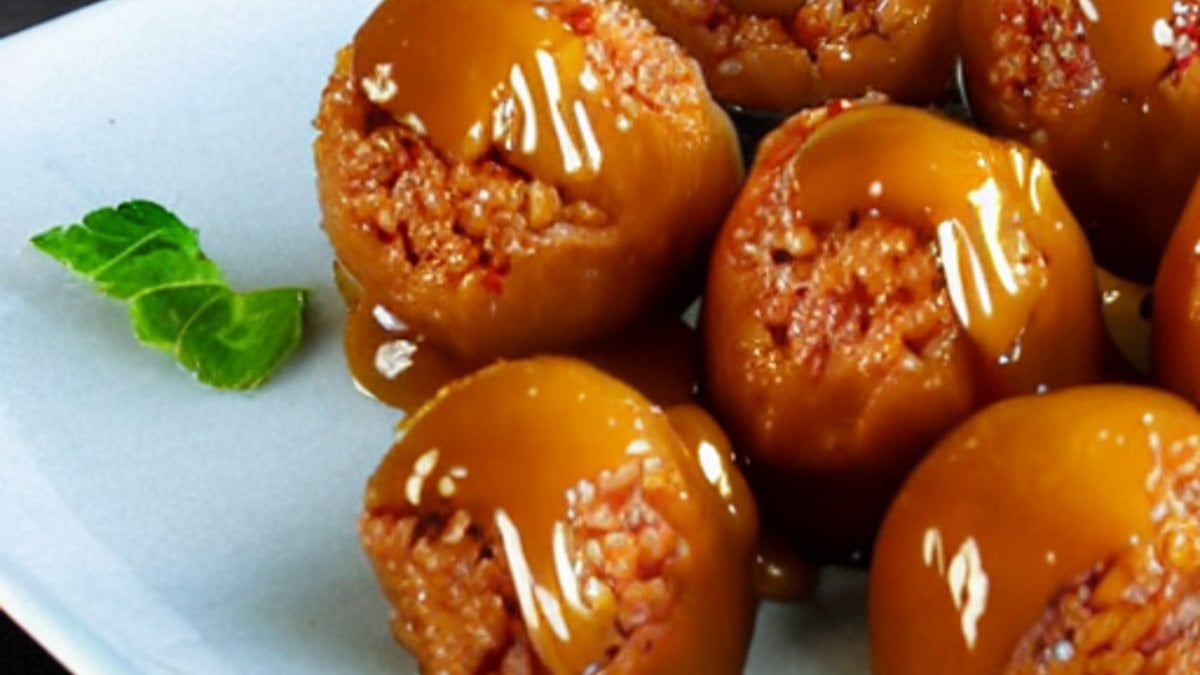
Bollo de Maíz Nuevo
Indulge in the mouthwatering flavors of Bollo De Maíz Nuevo, a traditional Panamanian dish made with fresh corn. This delectable treat is a staple food in Panama, much like ceviche.
To make it, broken corn kernels are ground and mixed with wheat flour to create a dough that’s then wrapped in banana leaves and boiled until cooked. The result is a soft, slightly sweet cake that pairs perfectly with any savory dish or can be enjoyed on its own as a snack.
The origins of Bollo De Maíz Nuevo can be traced back to the indigenous people who lived along the Panama Canal and have been passed down through generations as a beloved traditional Panamanian food.
For more corn-based recipes, check out these corn dip recipes or corn salad recipes.
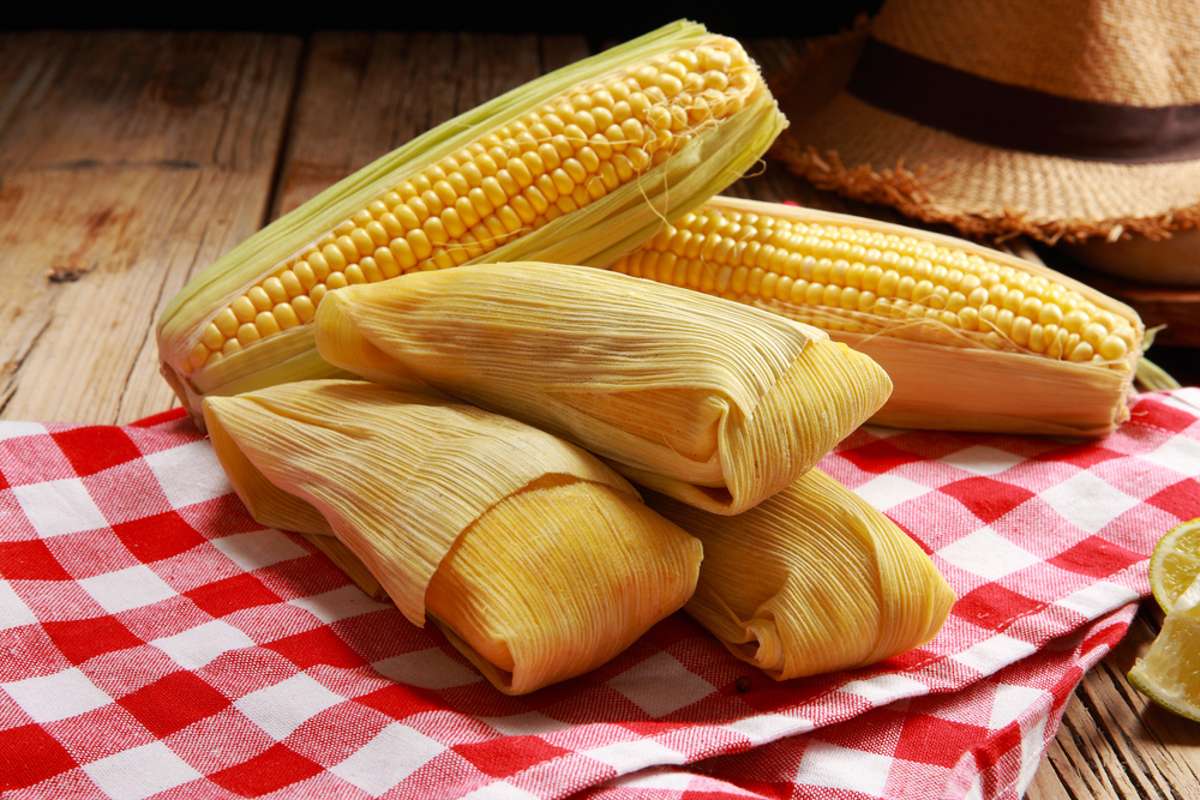
Sancocho Panama style
Get ready to savor the tantalizing flavors of Panama-style sancocho, a hearty and comforting soup that will warm your soul.
This traditional Panamanian dish is made with chicken or beef, yuca root, corn on the cob, plantains, and other vegetables simmered in a flavorful broth.
The secret ingredient for this recipe is cane sugar which provides a sweet taste to balance out the saltiness of the meat. Sancocho de carne (meat sancocho) is one variation of this dish that uses beef instead of chicken.
You can find this delicious meal at many local restaurants in Panama City or follow our Panama Food Guide to learn how to make it yourself.
Sancocho is also popular in other Latin American countries such as Colombia and Dominican Republic but each country has its own unique twist to the recipe. Check out this delicious Sancocho Dominicano.

Carimañolas
These delicious treats are made with yuca frita (deep-fried cassava), filled with minced meat and spices, and shaped like small logs or croquettes.
The combination of the crispy exterior and juicy filling makes for a satisfying snack or meal.
Whether enjoyed as an appetizer or main course, Carimañolas are a must-try for anyone exploring the diverse flavors of Panamanian cuisine.

Tamal de Olla
Made with corn dough and stuffed with pork, chicken, or vegetables, this dish is wrapped in banana leaves before being boiled in a pot.
The result is a decadent combination of savory meat and sweet corn flavor.
Tamal De Olla has Spanish origins and has become one of the most beloved dishes in Panama’s cuisine because it embodies the essence of traditional cooking methods that have been passed down from generation to generation.
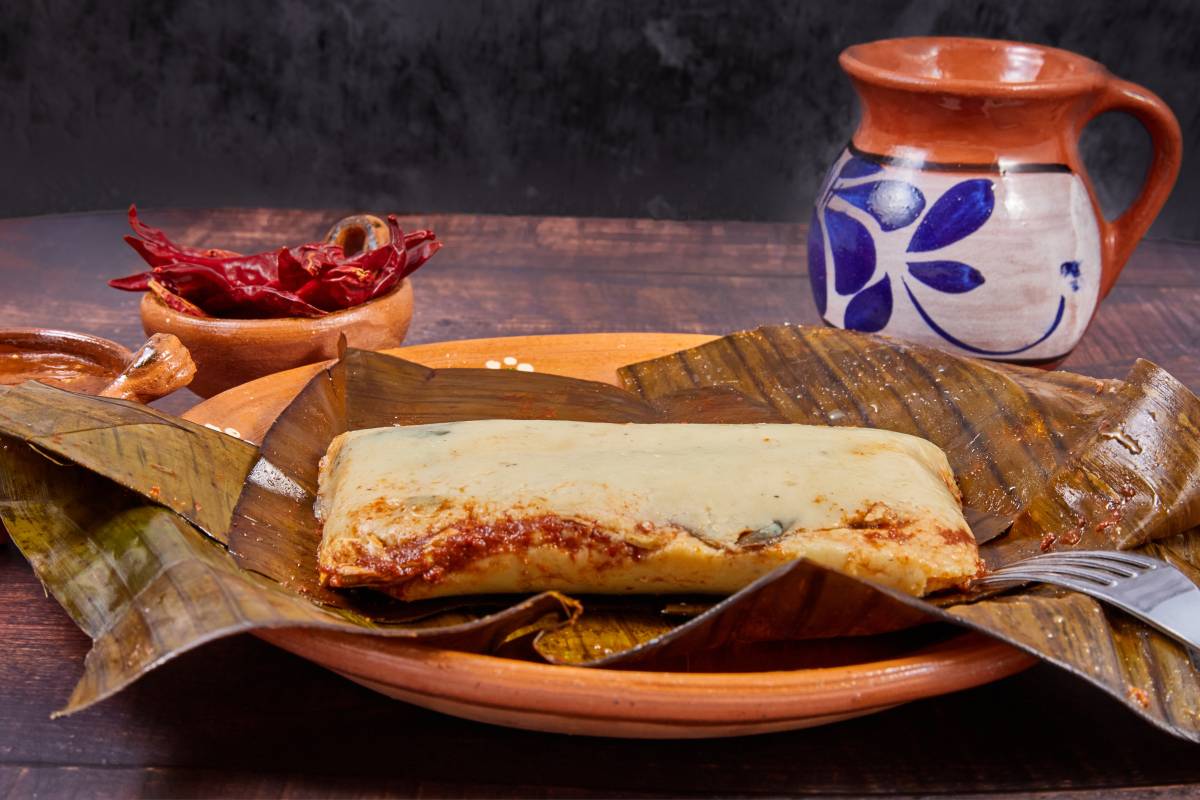
Pargo Rojo Frito (Fried Red Snapper)
Imagine yourself biting into a crispy, golden-brown Pargo Rojo Frito. The succulent meat of the red snapper melts in your mouth, and its delicate flavors tantalize your taste buds.
This traditional Panamanian dish is usually served with delicious sides like sweet plantains, fried plantains, and a refreshing salsa de piña (pineapple salsa) that adds a zesty touch to the meal.
To complete this gastronomic adventure, pair it with a traditional drink like chicha fuerte or chicheme.
It’s no wonder why this dish is one of Panama’s favorite meals! Also check out my delicious Puerto Rican chillo frito recipe.
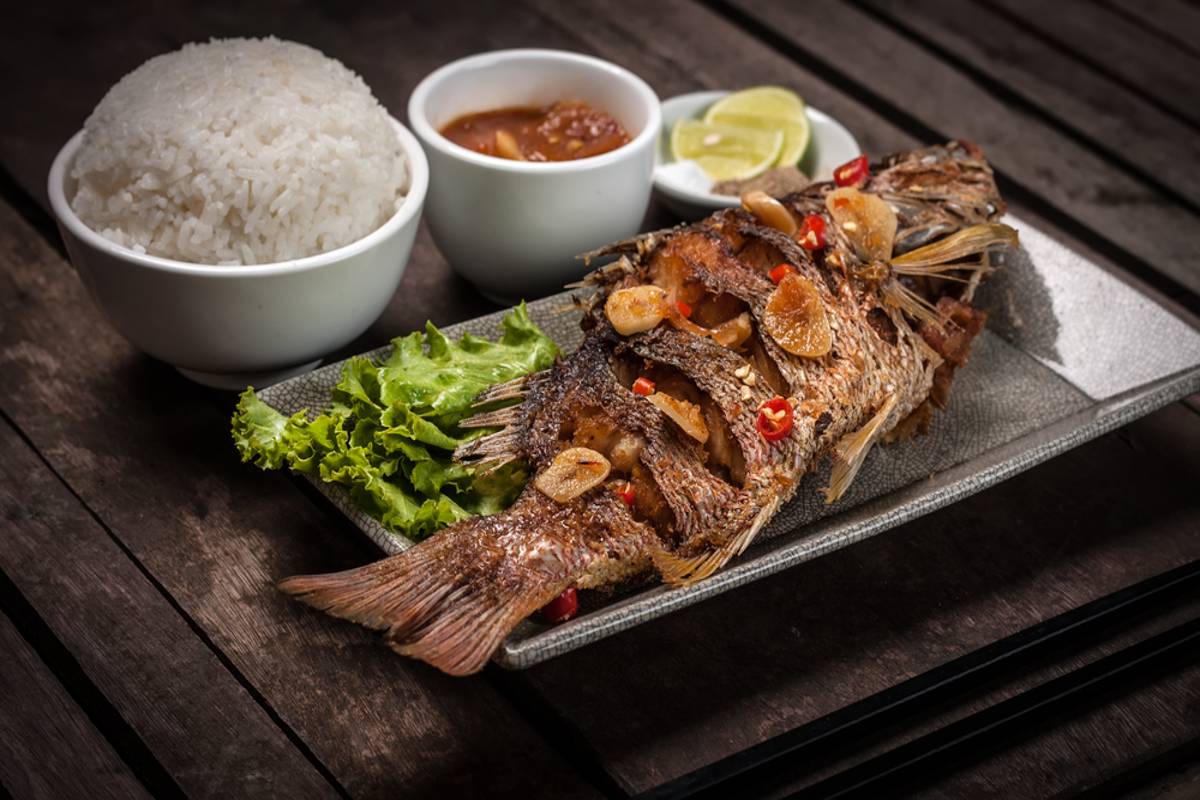
Huevitos de Leche (Milk Eggs)
These delicious milk eggs are a popular dessert in Panama, made with simple ingredients like milk, eggs, and sponge cake.
The dessert is prepared by whisking the eggs and milk together until they form a smooth mixture, which is then poured into individual mold shapes and baked in the oven. Once cooked, the huevitos are removed from their molds and served chilled.
The result is a creamy and sweet dessert that melts in your mouth.

Dulce de leche
Indulge in the creamy sweetness of dulce de leche, a beloved dessert popular throughout Panama and a staple in traditional Panamanian cuisine.
This decadent treat is made by slowly cooking condensed milk with coconut milk until it becomes a thick caramel-like paste.
The outcome is a smooth, creamy consistency that dissolves on your tongue, making you yearn for more.
Dulce de leche can be savored by itself or incorporated into other Panamanian sweet dishes like flan or tres leches cake.

Sopa de Pata (Cow’s Feet Soup)
A very well-known and loved beef soup in Panama, Sopa de Pata takes a while to cook and is often enjoyed on the weekends. It is a recipe that has a lot of history and is loved by all – young or old.
Cow’s feet are a delicacy enjoyed in Panama in various dishes. In this dish, they are cooked with corn, chayote squash, squash, and other root vegetables. Cilantro and other herbs are also added for flavor.
Apart from being enjoyed on the weekends, this soup is also enjoyed on special occasions and as a part of the main dinner meal.

Enyucado (Yuca cake)
You simply can’t resist the creamy and indulgent Enyucado, a traditional Panamanian dessert that is a must-try. Made from yuca (also known as cassava), this cheesecake-like treat has a unique texture that is both dense and moist.
The yuca gives it a slightly sweet flavor, which pairs perfectly with the cream cheese filling.
It’s usually baked in banana leaves, which adds an extra layer of flavor to this delicious dessert. Enyucado is not just popular in Panama, but also in other Latin American countries where cassava cake is a staple dish.
If you’re looking for something sweet and satisfying to end your meal with, give Enyucado a try!

Bacalao con Papas (Salted Fish with Potatoes)
To savor the taste of traditional Latin American cuisine, try out Bacalao Con Papas – a tasty dish made with salted fish and potatoes that will transport your taste buds to the heart of Panama.
This dish is a staple in many Latin American countries, including Panama, where it’s commonly served as a main course. The salted fish adds a unique flavor to the dish, which complements the soft texture of the potatoes perfectly.
To prepare this delicious meal, the fish is soaked overnight to remove excess salt and then boiled with potatoes until they’re cooked through. It’s then seasoned with onions, garlic, and other herbs for an added burst of flavor.
Bacalao Con Papas is definitely worth trying!

Cocada (Shredded Coconut Balls)
Indulge in the sweet and chewy goodness of Cocada, a popular Latin American dessert made with shredded coconut, condensed milk, and spices. This delicious treat is widely enjoyed throughout many Latin American countries, including Panama.
The recipe for Cocada typically includes ingredients such as shredded coconut, condensed milk, evaporated milk, cinnamon or other spices, and sometimes even nuts or raisins.
The blend is simmered on gentle heat until it reaches a creamy texture.
After cooling, it’s shaped into tiny spheres and drizzled with a sugary glaze before presentation.
Try this traditional Panamanian dish today and experience the delightful flavors of these unique shredded coconut balls!

Sopa Borracha (Rum Cake)
Imagine yourself savoring the rich flavors of Sopa Borracha, a decadent dessert soup infused with rum and spices. This traditional Panamanian dish is a perfect end to any meal, especially if you have a sweet tooth.
It consists of bread soaked in a mixture of milk, cinnamon, and sugar, which is then blended with eggs and raisins. The produced blend is heated until it achieves a creamy consistency. To finish off the dish, rum is added for an extra kick.
Sopa Borracha is just one example of the delicious cuisine that can be found in Latin American countries like Panama. Other popular dishes include Ropa Vieja (shredded beef), Arroz con Pollo (chicken with rice), Carne Guisada (stewed beef), and Pigeon Peas and Rice.
Whether you’re looking for something sweet or savory, Panamanian food has something for everyone to enjoy.

Tortillas de Maíz
The iconic Tortillas de Maíz is not just a dish, but a symphony of Panamanian culinary craftsmanship.
Crafted with precision and tradition, these are no ordinary tortillas. Their robust thickness pays homage to centuries-old culinary practices, and they come alive with luscious pockets of molten cheese or expertly seasoned meat.
With every bite, you’re greeted by a crisp golden exterior that seamlessly melds into a flavorful core, evoking the vibrant atmosphere and culture of Panama City.
For those with a penchant for authentic flavors, the Tortillas de Maíz stands as an embodiment of Panamanian gastronomy, capturing its essence and passion with every bite.

Patacones or Tostones
If you’re in the mood for a crispy and savory snack, try making Patacones or Tostones by frying flattened plantains until they turn golden brown. These popular fried snacks can be found throughout Latin American countries and are often served hot as a side dish or appetizer.
To make them, start by peeling and slicing green plantains into thick rounds, then fry them twice until they become crunchy on the exterior yet tender within.
They can be seasoned with salt or garlic powder and served alongside dishes like Ropa Vieja (a shredded beef stew), tomato paste stew with pigeon peas, or even as a substitute for fried bread.
Patacones are best enjoyed fresh out of the fryer when they’re still warm and crunchy!

Arroz con Pollo (Chicken and Rice)
You’ll love sinking your teeth into the savory and tender chicken pieces mixed with fluffy rice in Arroz con Pollo, a hearty Panamanian dish.
This traditional meal is made by cooking bone-in chicken with onions, garlic, tomato paste, and black pepper until it becomes tender and flavorful.
Then, rice is added to the pot along with green plantains that add a unique texture to the dish.
The resulting mixture is simmered until the rice has absorbed all of the chicken broth and flavors.
Arroz con Pollo is typically served as a main course during family gatherings or special occasions in Panama, but its delicious taste can be enjoyed any day of the year.

Chicheme
Chicheme is a refreshing and sweet drink that is perfect for hot days in Panama.
Made from boiled corn, milk, sweet syrup, and shaved ice, this beverage has a creamy texture and a subtle sweetness that will leave you wanting more.
Chicheme is definitely worth trying when visiting Panama.
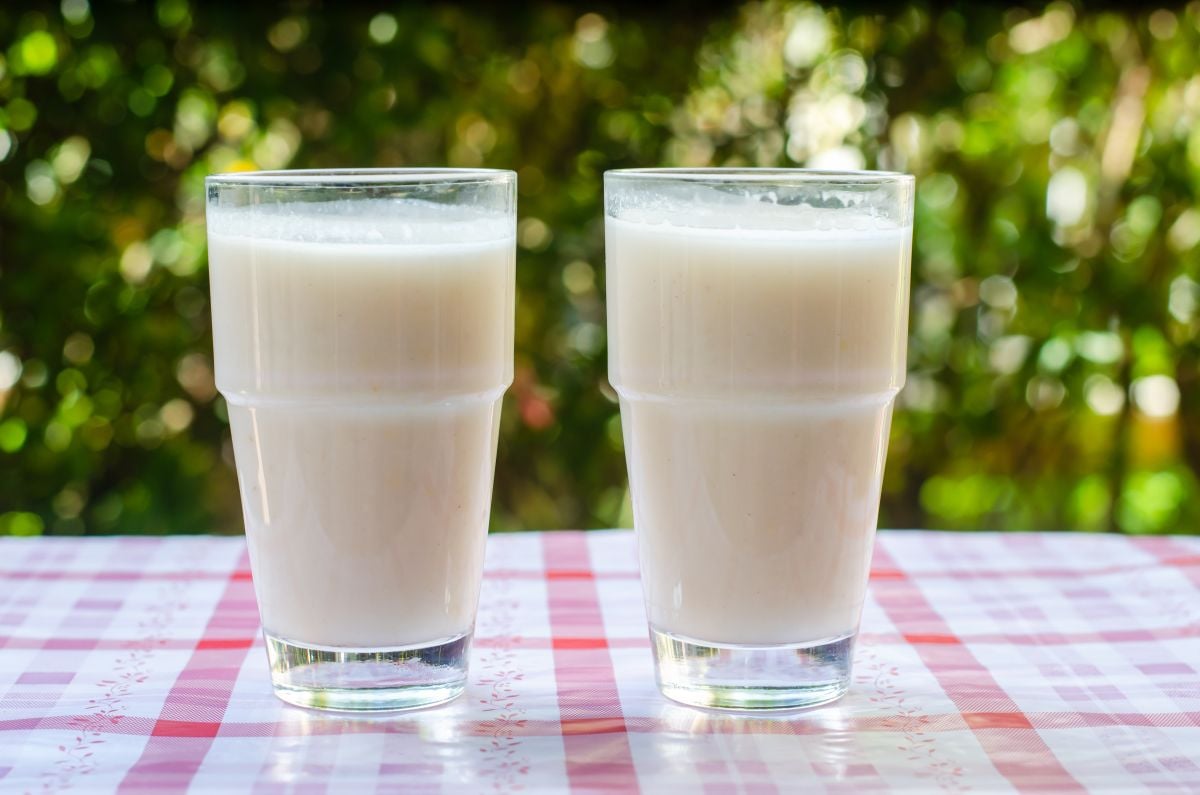
Conclusion
Panama is not just a land of picturesque landscapes and rich history; it’s a culinary treasure trove waiting to be explored.
From the zesty kick of ceviche, celebrating the ocean’s bounty, to the homey comfort of Guacho De Rabito, echoing tales from countryside kitchens, and onto the irresistible sweetness of Volteado De Piña, reminiscent of tropical celebrations under starlit skies.
Panamanian cuisine is a delightful journey of senses. Every ingredient, technique, and flavor combination weaves a tale of tradition, innovation, and love. So, the next time you think of a culinary adventure, let the flavors of Panama whisk you away. Dive in, relish, and let your palate discover stories untold.



